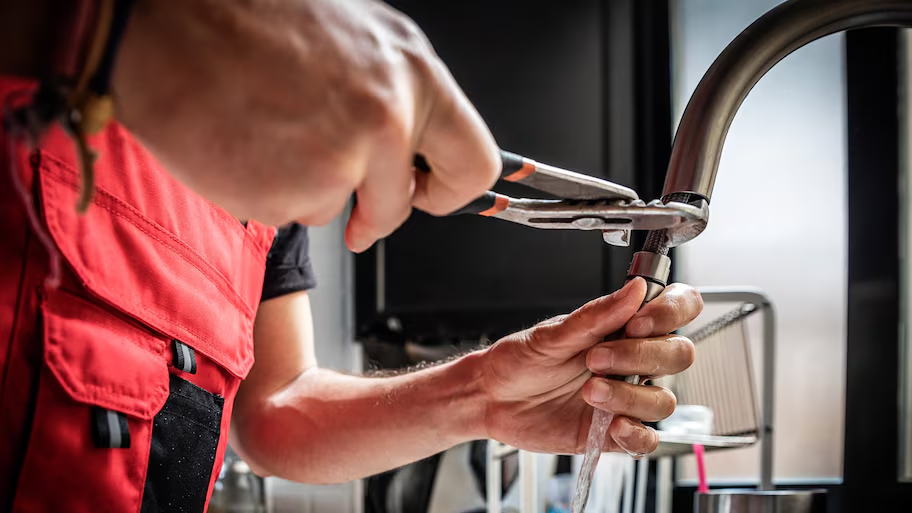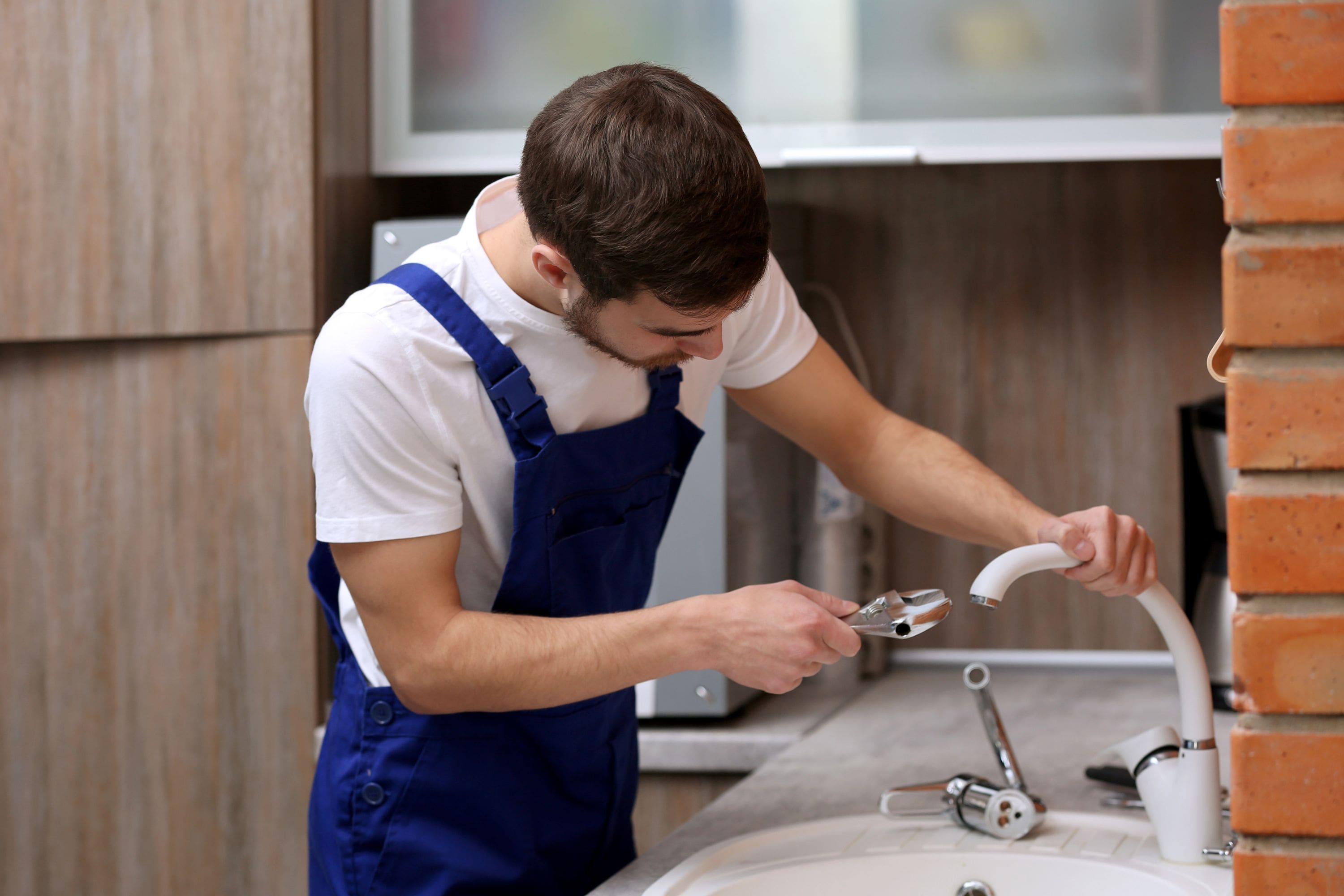We have unearthed this post on Leaky Faucets: Why They Happen & What to Do About Them directly below on the net and believe it made good sense to relate it with you here.

Trickling taps may appear like a minor trouble, but their impact exceeds simply the annoyance of the noise. From drainage to sustaining unneeded monetary prices and health and wellness threats, neglecting a trickling tap can lead to numerous effects. In this short article, we'll delve into why it's essential to resolve this usual home issue immediately and effectively.
Wastefulness of Water
Ecological Effect
Dripping taps contribute significantly to water wastefulness. According to the Environmental Protection Agency (EPA), a single faucet trickling at one drip per second can throw away more than 3,000 gallons of water each year. This not just strains water resources but additionally impacts communities and wild animals depending on them.
Financial Costs
Boosted Water Bills
Past the environmental effect, trickling taps can blow up water costs significantly. The built up wastage in time equates right into greater utility costs, which can have been avoided with prompt repairs.
Prospective Residential Property Damage
Additionally, extended dripping can lead to damage to components and surfaces bordering the tap. Water build-up can trigger staining, deterioration, and even architectural concerns if left ignored, resulting in extra repair work costs.
Health Worries
Mold and Mildew Development
The constant presence of dampness from a trickling faucet develops a perfect setting for mold and mildew and mold development. These fungi not only endanger indoor air top quality however likewise position health and wellness risks, especially for people with respiratory system conditions or allergic reactions.
Waterborne Diseases
Stagnant water in leaking taps can become a breeding place for germs and various other microorganisms, raising the threat of waterborne diseases. Pollutants such as Legionella bacteria prosper in stationary water, possibly leading to significant diseases when ingested or breathed in.
Do it yourself vs. Professional Repair service
Pros and Cons of DIY Repair Work
While some may attempt to fix a trickling faucet themselves, DIY repairs come with their very own set of obstacles. Without appropriate understanding and tools, DIY attempts can exacerbate the problem or result in incomplete repairs, extending the problem.
Advantages of Hiring a Specialist Plumber
Employing an expert plumber makes sure that the underlying root cause of the trickling faucet is resolved properly. Plumbing technicians possess the knowledge and tools to detect and repair faucet problems effectively, conserving time and reducing the risk of further damages.
Step-by-Step Guide to Fixing a Dripping Faucet
Tools Required
Before trying to fix a leaking faucet, collect the required devices, consisting of an adjustable wrench, screwdrivers, replacement components (such as washers or cartridges), and plumber's tape.
Typical Tap Issues and Their Solutions
Recognize the sort of faucet and the details concern creating the drip. Common issues include worn-out washers, rusty valve seats, or defective O-rings. Describe supplier guidelines or on the internet tutorials for step-by-step assistance on repairs.
Preventive Measures
Regular Maintenance Tips
To prevent leaking taps, carry out regular upkeep such as cleaning aerators, inspecting for leakages, and replacing damaged parts quickly. Additionally, consider installing water-saving tools or upgrading to more reliable fixtures.
Relevance of Prompt Repairs
Dealing with leaking faucets as soon as they're discovered avoids additional water wastage and prospective damages, ultimately saving both water and money in the long run.
Effect On Residential Or Commercial Property Value
Understanding of Well-Maintained Property
Preserving a property in good condition, consisting of resolving upkeep issues like trickling taps, boosts its perceived value and charm amongst prospective buyers or tenants.
Impact on Resale Value
Features with well-kept plumbing components, including faucets, command higher resale values in the property market. Dealing with dripping faucets can add to a positive perception throughout residential or commercial property assessments and arrangements.
Ecological Obligation
Specific Contribution to Conservation
Taking obligation for repairing leaking faucets straightens with wider initiatives towards water conservation and environmental sustainability. Every individual's activities collectively make a significant effect on maintaining precious resources.
Lasting Living Practices
By prioritizing punctual repair services and taking on water-saving behaviors, people add to lasting living methods that profit both existing and future generations.
Conclusion
Attending to a leaking tap exceeds simple benefit; it's a vital step toward saving water, minimizing financial prices, and securing health and residential or commercial property. Whether through DIY fixings or expert aid, acting to deal with dripping faucets is a small yet impactful method to advertise accountable stewardship of sources and contribute to a healthier, more sustainable future.
How to Fix a Leaky Faucet: Step-by-Step Repair Guide
A leaky faucet may seem like a simple annoyance, but if it's not fixed promptly, that leak could cost hundreds to potentially thousands. From water damage to mold, mildew, and high water bills, even a tiny leak can be catastrophic if left unattended. Damage like this can even affect the overall value of your home, so it's important to take the right approach for leaky faucet repair. You may need the help of a plumber in some cases, but we've got a few tips you can try on how to fix a leaky faucet before calling the pros.
Four Faucet Types
When you're learning how to fix a leaky faucet, the first step is knowing what kind of faucet you're working with! There are four common types.
Cartridge Faucets
Cartridge faucets come in one- or two-handled varieties. In one-handled cartridge faucets, hot and cold water combines in a single cartridge. In the two-handled versions, hot and cold water are controlled separately and mixed in the faucet.
Ball Faucets
Ball faucets have a single lever you push up and down to adjust the pressure and rotate to change the temperature. A slotted metal ball controls the amount of water allowed into the spout.
Compression Washer Faucets
They're the oldest type of faucet, but they're still used in many homes — especially older ones. Compression faucets have two separate handles that, when turned, raise or lower the washer that seals a water valve. This valve stops water from flowing through the faucet when it is turned off.
Disc Faucets
Disc faucets rarely need to be repaired due to their maintenance-free design. The water flow is controlled by two discs — the upper one raises and lowers against a fixed lower disc, creating a watertight seal. If your disc faucet starts leaking, you may need to replace the seals or clean residue buildup from the inlets.
Fixing a Leaky Faucet
Step 1: Turn Off the Water
Whether you're learning how to fix a leaky bathtub faucet or how to fix a leaky kitchen faucet, always turn off the water supply to your working area when you're fixing a leak. The last thing you want is a flood added to your list of things to fix.
Look for the shutoff valves below your sink or around the tub and turn them clockwise to stop the water flow. If your faucet doesn't have shutoff valves, you may need to turn off the water for the whole house. Check to make sure it's off by turning the faucet on. If nothing comes out, you're ready to start the repair.
Step 2: Take Apart the Faucet
How you disassemble your faucet depends on the type of fixture you have. You can use a flathead screwdriver to remove the caps on top of the handle or handles for cartridge and compression faucets. Inside, you should see handle screws. Unscrew these with a screwdriver to remove the handle.
Disc- and ball-style faucets will typically have an inlet screw near the handle, and removing that will reveal the interior of the faucet.
Detach the Valve Stem
For cartridge- and compression-style faucets, you'll see the inner valve stem or cartridge once you remove the faucet handles. If you have a compression faucet, unscrew the brass valve stem. If you have a cartridge faucet, pull out the cartridge. If your cartridge has been in place for a while, it may require some tools or extra force to remove it due to mineral deposits.
Examine and Replace Parts
Once you've removed the parts, check them out to confirm what needs to be replaced. You may see corroded rubber washers, O-rings, stems, or cartridges. On a ball-style faucet, check the seats and springs for damage.
If you need to repair a leaky disc faucet, check the inlet and seals on the lower disc.
Once you determine what parts must be replaced, visit your local hardware store. Bring the damaged parts with you to ensure you can purchase the correct components to replace them.
Clean Valves and Faucet Cavity
If you've removed a stem or cartridge, you may notice mineral buildup in the faucet's threads. Use white vinegar to clean the valve seat by soaking it for a few minutes, then scrub it away with a soft toothbrush and rinse with warm water. You can also clean the interior of the faucet in the same way.
Reassemble the Faucet
Once your faucet is cleaned and the required parts have been replaced, it's time to reassemble it. Put the pieces back together and slowly turn the water supply back on. Doing this slowly is crucial because too much initial water pressure can damage the new hardware you've just installed.
https://homewarranty.firstam.com/blog/how-to-fix-leaky-faucet

I hope you enjoyed our part about Why Are My Faucets Dripping (And Can I Fix It Myself)?. Many thanks for spending some time to read our post. I beg you set aside a second to distribute this entry if you appreciated it. Thank you so much for taking the time to read it.
Comments on “When It's Crucial to Mend a Faulty Faucet”